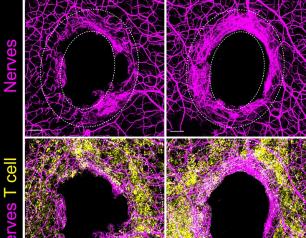42 Results
Scientists Identify Interferon-gamma as Potential SARS-CoV-2 Antiviral
Conditioning the lungs with interferon-gamma, a natural immune system protein best known for fighting bacterial infections, appears to be a strong antiviral for SARS-CoV-2, which causes COVID-19
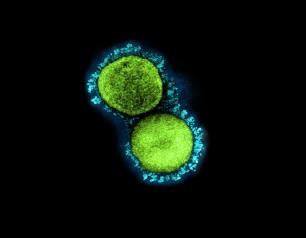
NIAID Team Explores Metabolism in Determining Infection Severity
The route a pathogen takes in causing infection can determine the severity of disease. NIAID scientists are looking at metabolism to determine how and why there is a difference.
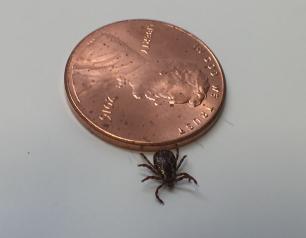
The STOMP Trial Evaluates an Antiviral for Mpox
NIAID launched the STOMP trial to determine whether the antiviral drug tecovirimat can safely and effectively treat mpox. In a video, Dr. Cyrus Javan of NIAID's Division of AIDS explains the importance of the STOMP trial.
Promising Experimental Vaccine for Tick-borne Kyasanur Forest Disease Virus
With ticks expanding their territories in many parts of the world, a NIAID research group has likewise expanded its promising vaccine research to two typically rare pathogens with potential for public health importance -- Kyasanur Forest disease and Alkhurma hemorrhagic fever.
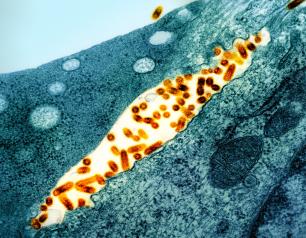
NIAID-Funded Study Traces Evolution of Malaria Drug Resistance in E. Africa
A new NIAID-funded study shows how inconsistent malaria control measures in East Africa could be aiding the emergence of drug-resistant mutations in the primary parasite that causes malaria.
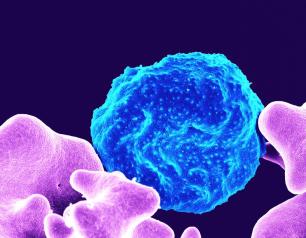
NIAID’s VRC, S. Africa’s Afrigen Kick Off Vaccine-Sharing Efforts
A team of vaccine production experts from South Africa recently finished training with NIAID Vaccine Research Center scientists. Their objective: to globally produce vaccines against a list of troubling infectious diseases.
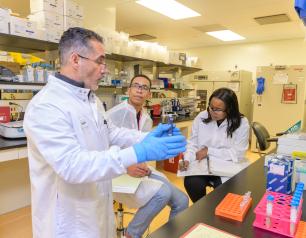
Hepatitis B and C—A Closer Look at NIAID Research to Accelerate Elimination
Viral hepatitis is an inflammatory liver disease caused by infection with any of the known hepatitis viruses—A, B, C, D, and E. Most of the global viral hepatitis burden is from hepatitis B and C, which affect 354 million people and result in 1.1 million deaths annually. The Centers for Disease Control and Prevention estimates that in 2020 there were 14,000 and 50,300 new acute infections of...
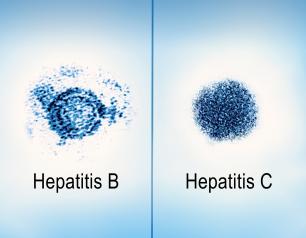
Final IAS 2023 Conversations—HIV & STI Prevention, Stigma, and U=U
As the International AIDS Society’s 12th Conference on HIV Science (IAS 2023) conference drew to a close on Wednesday, HIV.gov continued our conversations about the latest research being presented, with updates on post-exposure prophylaxis for STIs (Doxy-PEP), implementation of HIV PrEP, and the effectiveness of U=U.
IAS 2023—HIV Vaccines, bNAbs, and an Update from NIH’s Office of AIDS Research
This blog is cross-posted from HIV.gov.
On Tuesday at the International AIDS Society’s 12th Conference on HIV Science (IAS 2023), HIV.gov continued our conversations about research highlights, including a focus on the latest about HIV vaccines. We also heard an update from the NIH Office of AIDS Research.
NIH’s Carl Dieffenbach, Ph.D., Director of the Division of AIDS at the National Institute...
Conversations at the Opening of IAS 2023
The International AIDS Society’s 12th Conference on HIV Science (IAS 2023) opened Sunday, with thousands of scientists, policy leaders, and advocates gathered to present and discuss the latest advances in HIV research. HIV.gov’s coverage of the conference began with two video conversations looking ahead to the exciting research that will be presented.
IAS Conference Highlights—Heart Disease Prevention for People with HIV, Long-acting HIV Prevention and Treatment
During the first full day of sessions at the International AIDS Society’s 12th Conference on HIV Science (IAS 2023), HIV.gov shared conversations on important study findings about reducing cardiovascular disease among people with HIV and the latest developments with long-acting prevention and treatment options that could one day become safe and effective alternatives to daily oral pills.
Promising Advances for Antibody Treatment of Viruses that Cause Neurologic and Arthritic Diseases
NIAID scientists and colleagues are one step closer to developing a safe and effective therapy against alphaviruses, which are spread by mosquitoes and can cause two types of disease in people: causing severe neurological impairment such as encephalitis (brain swelling) or crippling muscle pain similar to arthritis.
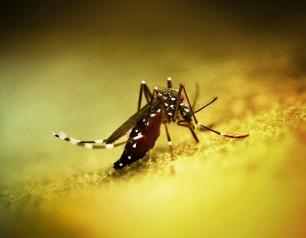
Universal Influenza Candidate Vaccine Performs Well in Phase 1 Trial
Developing a universal influenza vaccine is a significant priority for NIAID scientists. Two new studies describe a unique candidate developed by NIAID's Vaccine Research Center that performed well in a Phase 1 clinical trial.
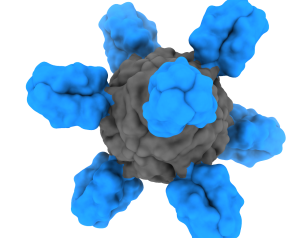
CROI 2023—Dr. Dieffenbach Shares Research Highlights on Long-Acting HIV Prevention and Treatment, COVID, and a Cure Update
Dr. Dieffenbach, Director of the Division of AIDS, shared updates about some research on long-acting HIV prevention and treatment and COVID treatment and prevention. He also discussed news of another reported case of HIV cure.
Doxy-PEP for STIs and More—Dr. Dieffenbach’s Highlights from Day 1 of CROI 2023
During the first full day of research presentations at the 2023 Conference on Retroviruses and Opportunistic Infections (CROI), HIV.gov spoke with Dr. Carl Dieffenbach, Director of the Division of AIDS at NIH’s National Institute of Allergy and Infectious Diseases (NIAID), about some initial highlights, including the opening session that featured a lecture by Dr. Anthony Fauci and several studies about the use of doxycycline for post-exposure prophylaxis (Doxy-PEP) for sexually transmitted infections (STIs).
Novel Study Model Reveals New Understanding of Fatal Familial Insomnia
Fatal familial insomnia (FFI) is a little-known yet horrific disease in which people die from lack of sleep. In a new study, NIAID scientists developed a cerebral organoid model to study the exact protein mutation that causes FFI.
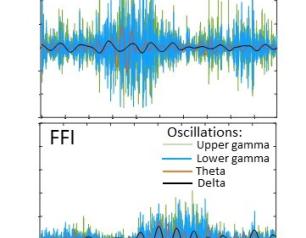
NIAID-led Work Identifies Bacteria Signaling for Nerve Repair in Mice
A team of NIAID-led researchers has identified a mechanism in mice in which the immune system and commensal bacteria help repair damaged sensory neurons within the skin. They hope their findings could lead to therapies that stimulate recovery in people following skin injury and limit damage from chemotherapy and chronic diseases.
